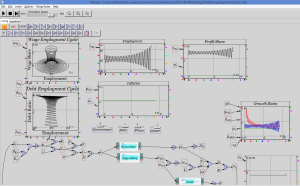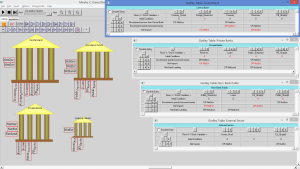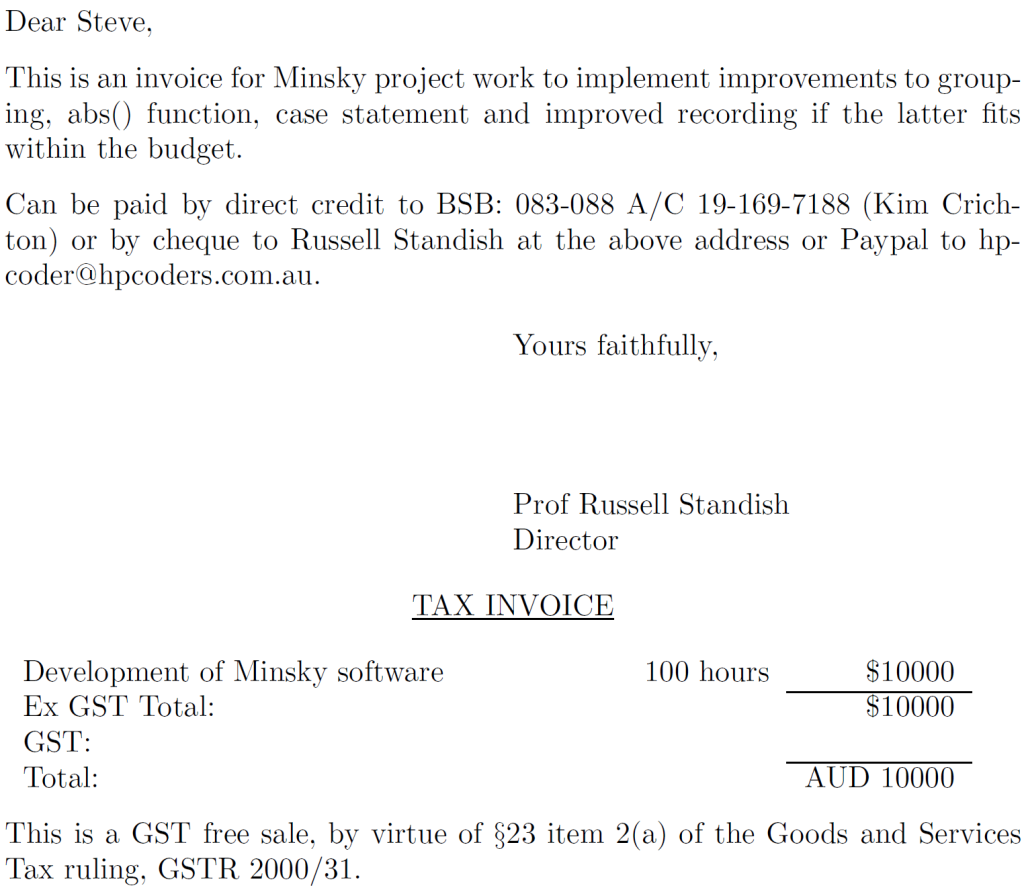I’ve just put A$10,000 of my own money towards improving Minsky, the Open Source program I have designed to enable economists to create dynamic and monetary models of the economy. If you support the work I’m doing to help economics escape its 19th century equilibrium fetish, please consider also making a donation to Minsky’s development via Dr Russell Standish’s PayPal account (or via direct debit, using the account details you’ll find below):
Minsky has been programmed almost exclusively by Dr Russell Standish, and $10,000 will buy 100 hours of Russell’s programming time. About A$230,000 has been spent on it so far–with US$128,000 coming from an initial INET grant (when the US$ was worth less than the A$), US$78,000 from a Kickstarter campaign, and sundry other amounts from supporters like Bruce Ramsay, who runs the Ending Overlending page that is linked to from this blog. This funding enabled Russell to build the basic functionality Minsky needed, along with a lot of innovative “smarts” that set it apart from its much more established rivals in system dynamics–programs like Matlab’s Simulink, Vensim, Stella and Vissim that cost thousands of dollars a copy and have been around for decades.

For example, Minsky is the only system dynamics program that lets you use Greek characters and symbols, superscripts and subscripts; it runs plots dynamically while a simulation is running (which only Vissim also does in the system dynamics product space), it’s the only program that lets you insert variables and operators by typing directly onto the canvas rather than having to use the mouse and toolbox palettes; and of course it’s the only program that supports double-entry bookkeeping to allow complex inter-related financial accounts to be simulated dynamically.
But the program is still incomplete. Some basic things like an IF/THEN/ELSE block are missing; some aspects of grouping don’t work properly yet, you can’t save part of a Minsky file as a toolkit, and so on. I’m putting $10,000 of my own cash in to get these things done now–and there are many other features that should be added. These range from simple things like adding shortcut keys for “Save As” to the final ambitions I have for the program–enabling it to model multiple sectors and multiple economies at once.
If we can raise another $30,000 or so, we can also address one of the main complaints that I hear about Minsky: to quote my good friend Tom Ferguson, INET’s Research Director, from our dinner together in London last month, “Why is Minsky so hard to use?”.

As I told Tom over dinner, part of the reason is that economists have almost no experience with system dynamics software.
This was comically illustrated by Noah Smith’s question to me “Tell me what the ‘wires’ do in the tool?” on Twitter about two years ago, when Minsky’s development had just begun: like most economists, Noah had apparently never seen system dynamics software before, and thought I had invented the idea of using “wires” to layout equations visually (and he thought I’d made a logical error too, though I must say Noah seems to have cottoned on to dynamic modelling since). Engineers find using Minsky easy, because the flowchart metaphor for equation design has dominated engineering now for over 3 decades.
But the other part of why Minsky is “so hard to use” is that “so little money has gone into its development”. There’s just over one man-year’s worth of coding in Minsky, so in some ways it’s amazing that it does anything useful at all–let alone enough to win SourceForge’s “Program of the Month” award back in January 2014. My original application to INET asked for US$250,000; I received US$128,000; with that money expended, Minsky just worked but had lots of bugs and many incomplete features. With the additional $100,000 raised from the public since, it now works reasonably well, still has some bugs, but needs lots more features to be complete. Additional money from you now will help add some desirable “ease of use” features–such as direct entry of equations, laying out causal loops prior to building a model, better graphics, exporting models in vector graphics formats for documentation, etc. An absolute bomb of funding–if some hedge fund out there that uses my economic ideas (you know who you are) decides to give something back–will enable data importing, fitting models to data using nonlinear parameter estimation techniques, and so on.
So please, if you’ve read this far, and you support what Minsky is trying to achieve–giving economics the capacity to build realistic monetary, dynamic models of the economy–then go that little bit further and make a donation via this widget, or via direct credit into Russell’s accounts using the info in my invoice below:


